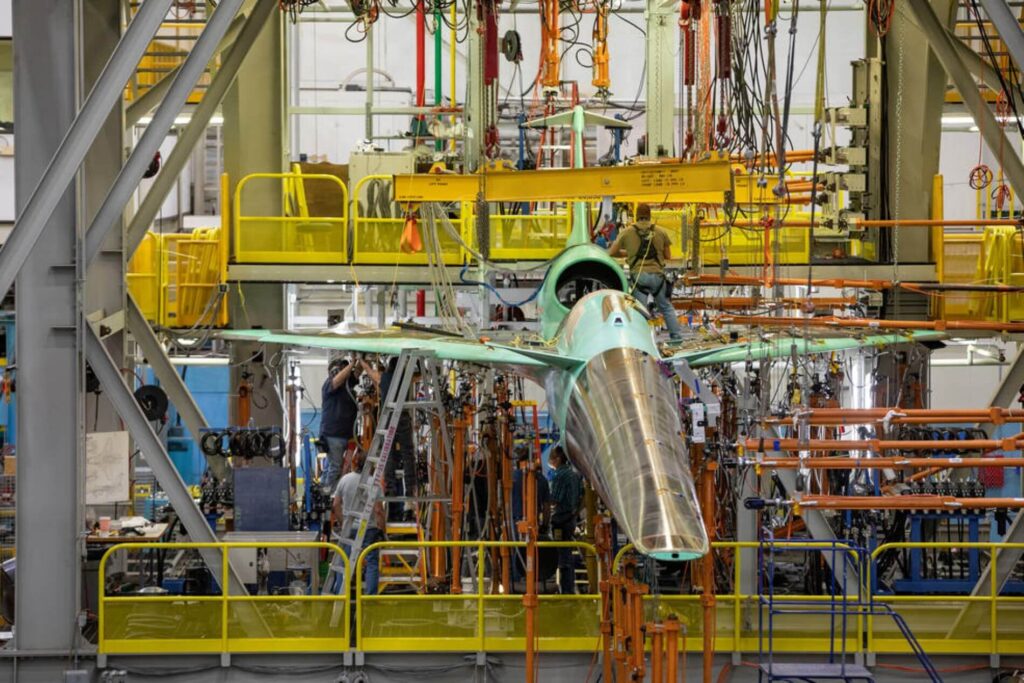NASA has almost finished assembling the X-59 quiet supersonic technology demonstrator, aiming to conduct its maiden flight in 2023.
The aircraft’s engine was installed in early November 2022, according to NASA’s press release, and the remainder of the assembly is almost complete.
Ground testing is to follow, ahead of the first flight in 2023.
The X-59 was fitted with the F414-GE-100 turbofan, a custom version of the General Electric F414 used on many fighter jets such as the Boeing F/A-18 Super Hornet, the Saab JAS 39 Gripen, the KAI KF-21 Boramae among others.
Perfect fit!
— Lockheed Martin (@LockheedMartin) November 14, 2022
The X-59’s engine has been installed to the fuselage and is ready for further testing. The Skunk Works® team continues to write the next chapter of aviation history. #AviationHistoryMonth pic.twitter.com/CdhCGIy365
The airframe, which was delivered to Lockheed Martin’s Skunk Works assembling facility in California in December 2021, has already undergone some ground tests.
When announcing that grounds testing had begun in January 2022, NASA said the aircraft was on track to fly by the end of 2022. However, the latest release did not specify the reasons why the flight has been delayed.
Manufacturing of the aircraft started in 2018, with the X-59 then scheduled to fly in 2021. A collaboration between NASA and Lockheed Martin, the aircraft is intended to demonstrate and test the possibility of minimizing the shockwave that results from breaking the sound barrier.
The shockwave, referred to as a sonic boom, is the main reason behind the ban on supersonic flight in many countries, and a major limiting factor for supersonic civil aviation.
According to NASA, the X-59 would first be subject to tests within a testing range at Armstrong Flight Research Center and could begin flying above major population centers in 2024.

